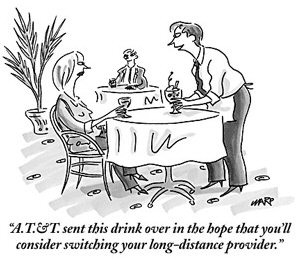 |
  |
 |
|
published: March 10, "2007"
Rigged Competition, Skewed Databases & Faked Races In Call-Center Sales
|

What's New & Previews
Jimi's Prediction —
A Remote View About Jimi Hendrix Timeline Blog Asteroid Impact Evolution Woodstock Blues Jimi Code VS. Da Vinci Code Credit Thefts Missile Agency/Moon Base Charade Remote View Mutation Seattleland Censorship Events Skewed Science Search Engine Rankings Download An Ad AT&T: New Nuremberg Wall(y)flower Syndrome Rochester Media DVD/CD Store More Links... 
page 2 of 9
After the Microsoft mogul bully destroyed my career, I took a job at a call center. I stayed there for more than five years, making and taking calls on sales and consulting programs for many Fortune 500 companies, including Citibank, Proctor & Gamble, Ford, UPS, Kodak, Pitney Bowes, HP, Med America Insurance, Liz Claiborne, Ryder Trucks, 8 O'clock Coffee, and others.
As an employee I'm highly professional and adept at multi tasking, working multiple complicated computer programs simultaneously. I have a high capacity for retention of details and am extremely punctual by nature. Rarely do I miss a day of work, and almost never do I arrive late. After more than five years at that call center, the business was sold and the center closed. Much of our work was outsourced to cheaper customer service centers in India. I received severance pay along with all of the other phone reps there who became victims of "downsizing." The director of the center left me with a letter of recommendation that says, "Michael held the position of inbound agent in the Contact Center department. In this role Michael supported multiple clients and programs, demonstrating the ability to multi-task and handle very high stress levels. Michael has outstanding customer service skills and would be an asset to any company. He was part of a lay-off that occurred across all functional areas in our division." Over the ensuing year I went on a tour with a road band to have my concert recitals of Jimi Hendrix music filmed for a series of movies now being produced. When that tour finished, several friends from my call center work drew my attention to a news story about a local guy who'd been fired from a call center called "Sutherland." The guy had been trying to organize a union there to combat the abuses that workers suffer. At the same time I saw a review of Barbara Ehrenreich's book called Nickel & Dimed. For her story Ehrenreich went under cover as an employee for various firms. Her book is an inside look at the abuses American workers face. These two news stories gave me an idea. I saw an opportunity to put them together, to go undercover like Ehrenreich and investigate this call center. My friends who were still working as phone reps urged me to use my website to expose a major story that was being concealed by media. They helped me as I took my reference letters and resume, from nearly six years of successful call center work, to Sutherland. Right away I was offered a job to work there for AT&T. None of my other work history, besides my prior work as a call center rep for many Fortune 500 companies, was disclosed to the management at AT&T. My aim was to follow the example in Nickel & Dimed and perform an undercover investigation for First Century Press. I had just enough time to get this story, because I was simultaneously starting negotiations with a film production company and producers to work on a new book and movie about Jimi Hendrix. That work wasn't scheduled to begin for another several months, so in the meantime, I made my first-hand observations at AT&T. What follows is a description of what can only be called a true chamber of horrors… It started with a bang on Katrina-Day. I arrived for my new job at 8 a.m., just as the storm came ashore in New Orleans. Little did I know then what an apt analogy that omen would turn out to be. After a couple of weeks in a training class, the group of people I was with began to see that something was amiss here at AT&T. We were herded into a room with 250 cubicles and assigned seats. We sat before computers that housed the most complicated, convoluted, outdated and malfunctioning software program I'd ever seen (and I'd had experience with dozens of call center computer programs). To compound the situation - in our training class we were allowed a total of 15 minutes of "introduction" to this monstrously complex system called "Telepos" (meaning Telephone Pont of Sale) - which we soon started referring to as the Claws of TelePAWS - the thing systematically ripped and shredded our attempts to close a sale while customers waited often for hours on our phone lines. Every other function we tried to process on that contraption generated "error codes" more indecipherable than Egyptian hieroglyphics. AT&T had cut corners to such a degree that we were all expected to seek advice from co-workers who'd been on the floor for a few weeks longer than ourselves. This involved interrupting other reps who were on their phones assisting customers.  The repeated breakdowns of AT&T's faulty program software, and the ticking clock of impatient customers anxious to get off the phone, creates a siege mentality on the call center floor. The law of the jungle emerges in workers, it's every man for himself in a mad dash to accumulate enough instructions to effectively handle the PAWS of that erratic computer program and complete a sale. Needless to say, it's the attractive people who get spoon-fed the deep secrets and procedures that allows them to succeed first.
Go to page 3 of 9
|
| © 2007 First Century Press. All Rights Reserved. Contact Us |
